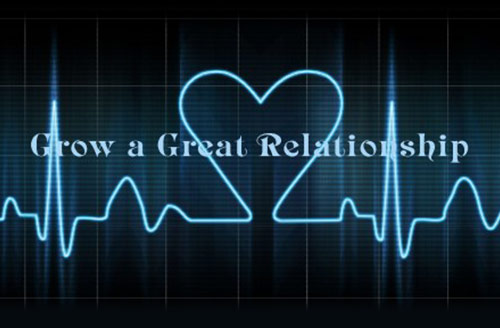 Connection in a romantic relationship is one of the many wonderful things that make you a couple. It demonstrates a level of true intimacy that has been established after braving the early stages of your relationship as a team. However, disconnecting within the relationship is a common and troubling occurrence that can shake the very foundation of your relationship.
Connection in a romantic relationship is one of the many wonderful things that make you a couple. It demonstrates a level of true intimacy that has been established after braving the early stages of your relationship as a team. However, disconnecting within the relationship is a common and troubling occurrence that can shake the very foundation of your relationship.
When two people fear connection and lack connecting skills, they find ways to avoid closeness. Although each couple’s style of disconnecting differs, many do not openly discuss their grievances and instead isolate themselves and slowly withdraw from the relationship.
If you are feeling disconnected in your relationship, the first step toward reconnection is to ask what is best for the relationship. Since you are in a couple, it is always important to look at difficulties from a bird’s-eye view of the relationship, encompassing the feelings and needs of both individuals. The second step in the process is to think about how you are contributing to the disconnection.
Disconnection manifests itself differently in each individual, but here are some common traits of disconnection:
- Criticizing
- Interrupting
- Nagging
- Threatening
- Being resentful
- Keeping secrets
- Name calling
- Lying
- Avoiding
- Ignoring
- Shaming
- Controlling
- Looking for problems
Do you find yourself engaging in any of these behaviors? If so, it is important to begin the process of reconnecting with your partner.
The most effective way to reconnect is to take charge of your own actions. Claiming that your partner will not cooperate or is not responding is no excuse. Begin the process of reconnecting and your partner will take the lead. It only takes one person to stop the disconnecting. Here are some suggestions how.
Thought Stopping
Your thoughts affect your emotions and your actions. All of the disconnecting behaviors listed above are triggered by certain thoughts you have about your partner, your relationship, or yourself. Take the time to pay attention to these thoughts. When you criticized your partner earlier in the day, what was the triggering thought? What about when you act defensively to a comment of your partner’s? Start to really think about what kind of thoughts are triggering your disconnecting actions. Then, start challenging them! What evidence do you have that the look your partner gave you meant he or she was angry? Flip around these negative thoughts and instead of blaming yourself for your partner’s bad mood, ask outright what is going on. Change your thoughts and your emotions and behaviors will follow.
Regain Intimacy
When we hear about deep, loving connections in relationships, the word “intimacy” is usually the first word that pops into our minds. However, many of us cannot define intimacy.
Think of in in this way:Intimacy = into me see.
Being intimate with your partner means letting him or her into your world, sharing your worries, hopes, and dreams. However, in order to be intimate with your partner, you have to feel safe and protected. You need to trust your partner wholeheartedly.
When your partner has gained your trust and you feel safe within the relationship, there are several ways to express and explore intimacy. The first way is through touch. Touch not only feels good, but it also promotes connection through the release of endorphins. When you and your partner touch, the chemical released promotes happiness, thereby creating a connection in your mind and body between your partner’s touch and feeling happy.
Another way to achieve intimacy is through kindness. Studies show that happy, stable couples treat each other kindly with respect. Much of the kindness that goes on between two people is subtle. Take the time to notice every action you make toward and about your partner. Is it kind? If not, rework what you are doing to ensure mutual respect in your relationship.
There are many ways to reconnect. See it as an opportunity to explore ways to make your relationship happier and healthier. Decide what forms of connection satisfy both of you and work regularly to maintain the connection that initially brought you together.
(Source: The Truth About Love by Pat Love, Ed.D)






